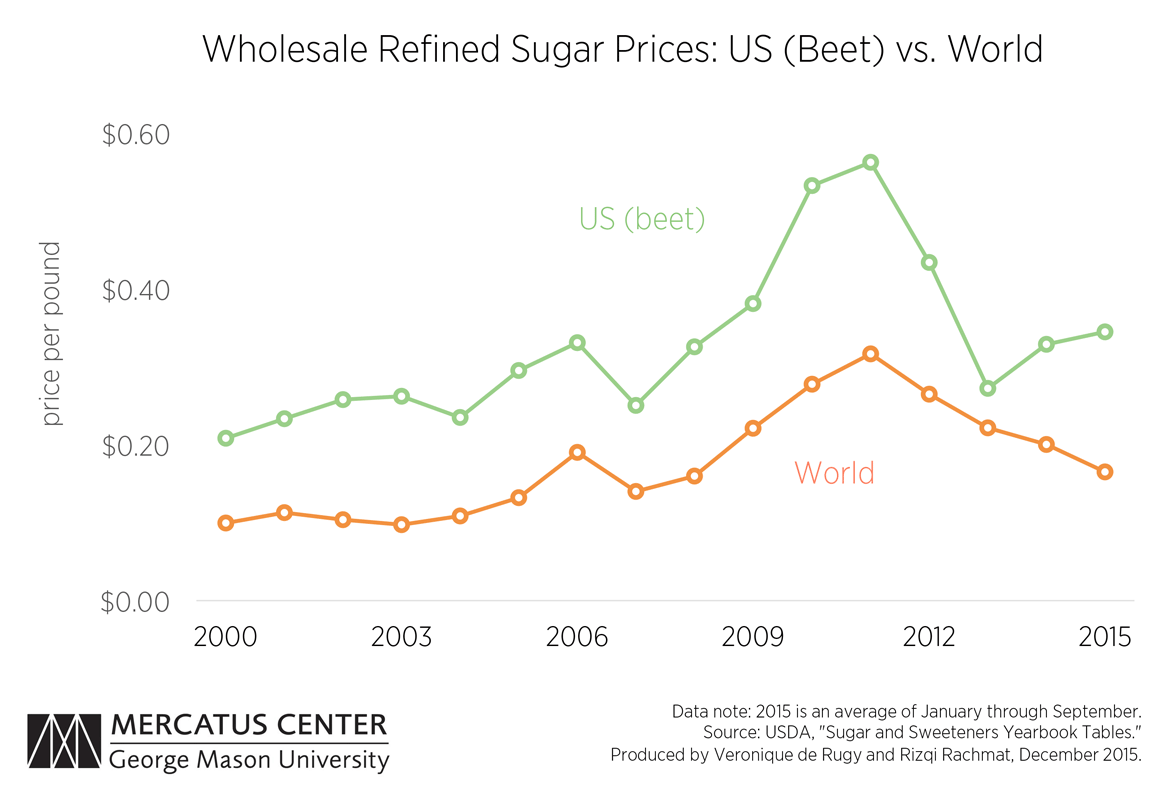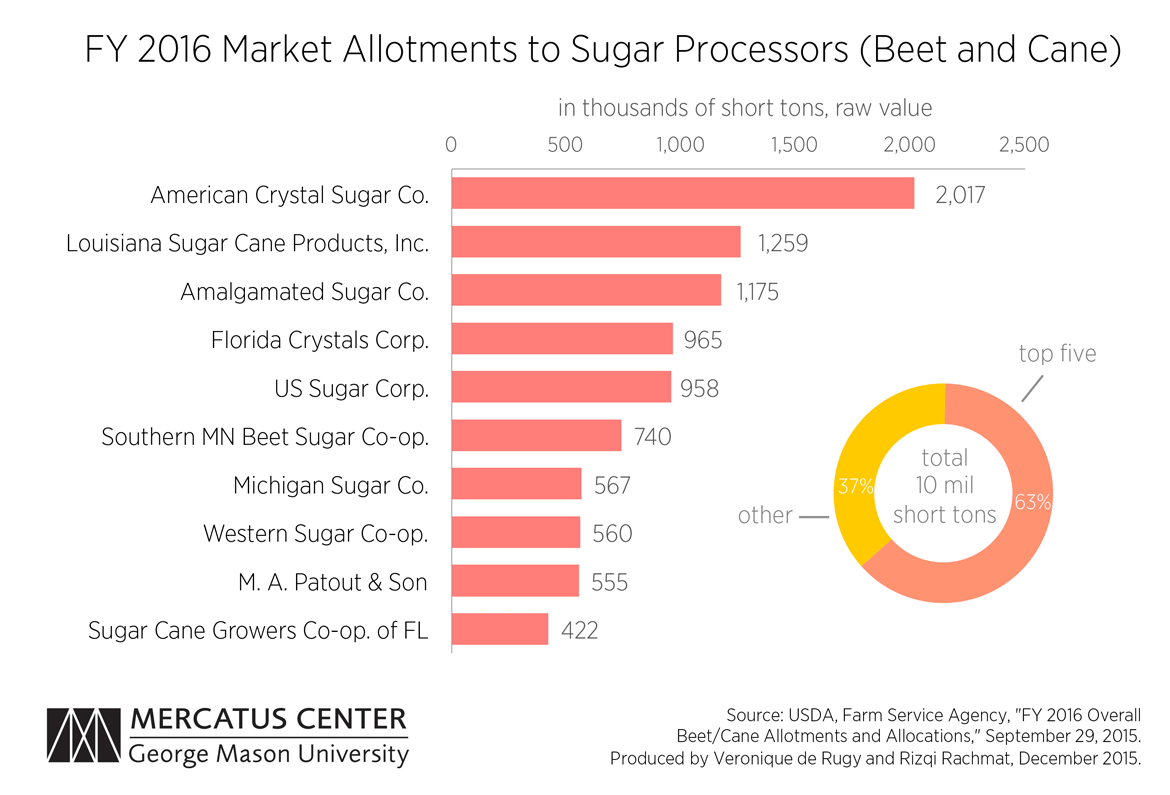- | Corporate Welfare Corporate Welfare
- | Data Visualizations Data Visualizations
- |
The Federal Sugar Racket Should Be Broken Up
Americans have become increasingly aware of the detrimental role of cronyism—in their lives and the economy in general—where certain industries extract privileges from the federal government. That means that the federal sugar racket, which clearly benefits the few at the expense of many, should be a prime target of policymakers looking to chip away at “corporate welfare.”
The federal government’s convoluted system for protecting the domestic sugar industry can be traced back to the waning years of the defunct Soviet Union. That’s ironic because the complicated scheme of price supports and protection from lower-cost foreign producers is textbook central planning.
The stated goal of federal sugar policy is to artificially inflate the price of sugar in order to protect the uneconomical US sugar industry. The federal government does so through a combination of preferential loans to the industry and limits on the domestic supply of sugar through marketing allotments and tariff-rate quotas for imported sugar. The result, as the first chart shows, is that US consumers have been paying, on average, twice the world price for sugar.
Economist Mark Perry calculates that the inflated price of sugar will cost Americans more than $3 billion this year. This “hidden tax” also hurts American companies that use sugar in the production of their products. One result has been that companies making sugar containing products (SCPs) have moved factories and jobs to other countries where sugar is cheaper. Indeed, the government itself acknowledged this in a 2006 report produced by the Department of Commerce’s International Trade Administration. The report stated that “Many U.S. SCP manufacturers have closed or relocated to Canada where sugar prices are less than half of U.S. prices and to Mexico where sugar prices are about two-thirds of U.S. prices.”
It would seem odd that federal policymakers would pursue policies that hurt consumers and the broader economy in order to protect the relatively smaller US sugar industry. The US sugar industry, however, is dominated by a small number of companies, as the second chart shows. The top five sugar processors received 63 percent of the total allotted amount for FY 2016. The allotments, which are intended to help keep prices artificially high by controlling the overall supply of domestically produced sugar, are largely based on the processors’ production histories.
The result is essentially a cartel in which a handful of processors dominate.
Americans have become increasingly aware of the detrimental role of cronyism—in their lives and the economy in general—where certain industries extract privileges from the federal government. That means that the federal sugar racket, which clearly benefits the few at the expense of many, should be a prime target of policymakers looking to chip away at “corporate welfare.”



